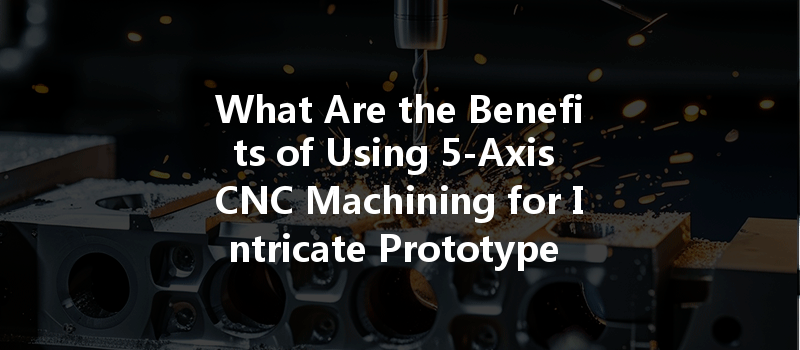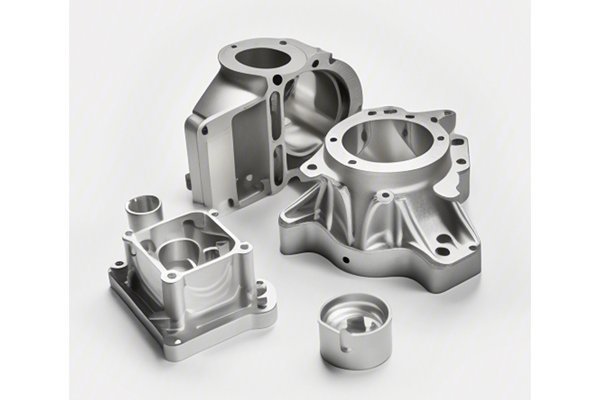Did you know that 5-axis CNC machining can reduce production time for intricate parts by up to 75% compared to traditional machining methods? This remarkable efficiency has made it a go-to choice for industries requiring precision and speed, especially in prototype development. In a world where innovation is key, the ability to rapidly develop high-quality prototypes can significantly influence project timelines and cost-effectiveness.
In this blog, we’ll delve into the sophisticated realm of 5-axis CNC machining, exploring its advantages, applications, processes, and much more. Whether you’re a business owner, an engineer, or just curious about manufacturing technologies, this comprehensive guide will provide you with valuable insights into the power of 5-axis CNC machining for intricate prototype development.
Understanding 5-Axis CNC Machining
What is 5-Axis CNC Machining?
5-axis CNC (Computer Numerical Control) machining refers to the use of computer-controlled machinery that can move in five different axes simultaneously. Unlike traditional 3-axis machines, which can only move along the X, Y, and Z axes, 5-axis machines add two additional rotational axes (A and B) to allow for more complex geometries.
The Mechanism of 5-Axis Machining
Here’s how 5-axis machining typically works:
Advantages of 5-Axis CNC Machining for Prototyping
One of the most compelling benefits of 5-axis machining is its ability to achieve a high level of precision. This is especially crucial for prototypes in fields like aerospace, automotive, and medical devices, where even the minutest inaccuracies can have significant consequences. The simultaneous movement across multiple axes reduces setup time and errors related to repositioning the workpiece.
5-axis machining allows for better tool engagement and smoother cutting paths, resulting in superior surface finishes. For intricate prototypes requiring aesthetic quality or high tolerances, the enhanced surface finish gives a better representation of the final product and reduces the need for extensive post-processing.
With 5-axis CNC machining, designers can produce complex geometries that would be nearly impossible with traditional methods. Features like undercuts, intricate details, and complex contours can be machined in a single setup, allowing for more freedom in design.
As previously mentioned, 5-axis machining can drastically reduce production times. By eliminating the need for multiple setups and manual handling, businesses can save hours, if not days, on prototype production. This efficiency can lead to faster time-to-market and higher productivity.
Though the initial investment in 5-axis CNC machines can be significant, the long-term cost benefits can be considerable. The reduction in setup time, waste materials, and the need for secondary operations all contribute to overall savings. Additionally, the quicker turnaround can enhance cash flow for businesses involved in rapid prototyping.
Enhanced tool engagement and reduced vibration during the machining process lead to extended tool life. This means less frequent tool changes, minimal downtime, and lower operational costs associated with maintaining tools.
In instances where parts require high assembly precision, 5-axis CNC machining can play a vital role in producing components that fit together seamlessly. This capability can greatly enhance the production of prototypes that simulate final product assemblages.
Applications of 5-Axis CNC Machining
5-axis CNC machining is not just a one-size-fits-all solution; it has a myriad of applications across several industries. Here are a few key areas in which it shines:
Aerospace
Aerospace components often involve intricate designs that demand high precision. 5-axis machining allows for the production of complex parts like turbine blades and fuselage components, where weight savings and structural integrity are paramount.
Automotive
In the automotive sector, prototypes for new models, engine components, and electrical parts can benefit from the flexibility and accuracy of 5-axis machining. Engineers can quickly iterate designs and produce prototypes that closely replicate the final product.
Medical Equipment
Given the stringent standards for precision in medical devices, 5-axis machining is an ideal choice for creating intricate parts like surgical instruments and implantable devices. The ability to maintain tight tolerances is essential for ensuring patient safety and device functionality.
Robotics
Robotics often involves assembling complex geometries with moving parts. 5-axis CNC machining can efficiently produce robotic arms and components that require a high degree of precision and intricate designs.
Process of 5-Axis CNC Machining: A Step-by-Step Guide

Step 1: Design and Modeling
The process begins with the creation of a 3D model, typically using CAD (Computer-Aided Design) software. Designers can visualize the product and make necessary adjustments before machining begins.
Step 2: CAM Programming
Once the design is finalized, CAM (Computer-Aided Manufacturing) software generates the tool paths. This step includes selecting the appropriate cutting tools, setting speeds and feeds, and ensuring that the machining operations align with the design specifications.
Step 3: Tool Selection and Setup
The chosen tools are loaded into the CNC machine, and the workpiece is securely clamped using fixtures tailored for the specific part. Proper setup is crucial for avoiding movement during machining, which could lead to dimensional inaccuracies.
Step 4: Machining Operations
The CNC machine begins machining according to the programmed tool paths. The simultaneous movements in five axes allow for efficient material removal while maintaining precision.
Step 5: Quality Inspection
Once machining is complete, the prototype undergoes a quality inspection. Tools like coordinate measuring machines (CMMs) are utilized to ensure that all dimensions meet specifications.
Step 6: Finishing Touches
Depending on the application, additional processes such as polishing, coating, or assembly may be performed to complete the prototype.
Challenges and Considerations
While 5-axis CNC machining provides many advantages, it is essential to be aware of potential challenges:
Operating a 5-axis CNC machine requires a higher skill level than traditional 3-axis machines. Companies may need to invest in training and development for their operators to ensure they can effectively use the equipment.
While the long-term cost benefits can be substantial, the initial investment in machinery and software can be significant. Businesses should carefully evaluate their needs and determine if the investment aligns with their production goals.
Specialized tooling may be required for certain applications in 5-axis machining. This can lead to higher upfront costs, but it’s essential to consider these tools’ expected lifespan and effectiveness.
Certain materials may pose challenges during 5-axis machining due to factors like brittleness or conductivity. Machinists must select materials that are compatible with high-speed machining processes.
Future Trends in 5-Axis CNC Machining
The landscape of manufacturing is continuously evolving. Here are a few trends and innovations that are expected to have a considerable impact on the future of 5-axis CNC machining:
The integration of automation and robotics in CNC machining is gaining momentum. Automated machining cells can use 5-axis machines to enhance productivity, allowing for lights-out manufacturing and reduced labor costs.
As new materials, like composites and advanced alloys, continue to emerge, 5-axis machining will adapt to process these materials effectively, opening the door for even more complex and lightweight designs.
The rise of Industry 4.0, with its focus on connectivity and smart technology, will inevitably affect CNC machining. Enhanced data analytics will enable companies to monitor machining operations in real-time, improving efficiency and reducing waste.
The combination of subtractive (CNC machining) and additive manufacturing techniques is a burgeoning field. Utilizing 5-axis CNC machining to create parts that are later enhanced through 3D printing could lead to innovative approaches in prototyping and production.
In conclusion, 5-axis CNC machining has revolutionized the way we approach prototype development. Its unmatched precision, efficiency, and flexibility make it an invaluable tool for engineers and designers seeking to bring their ideas to life rapidly. By overcoming traditional limitations and offering a means to create complex geometries in a more efficient manner, it has become an essential part of modern manufacturing processes across various industries.
This blog has provided an extensive overview of 5-axis machining, emphasizing its benefits, applications, processes, challenges, and future trends. As industries continue to evolve, the importance of leveraging advanced manufacturing technologies like 5-axis CNC machining cannot be overstated.
So, why should you consider the power of 5-axis CNC machining for your next project? Because in today’s fast-paced world of innovation, staying ahead of the competition requires not just speed and efficiency but also the ability to create intricate designs with remarkable accuracy. By embracing 5-axis machining, you can ensure that your prototypes are not only high in quality but also reflective of your vision for the future. So, take the time to explore this technology; your next breakthrough could depend on it.






